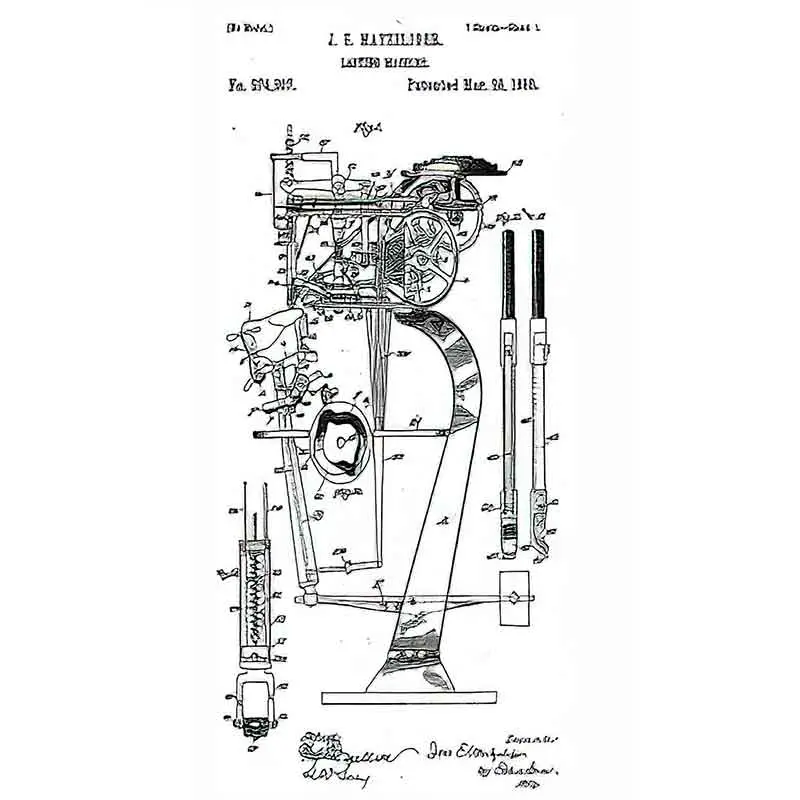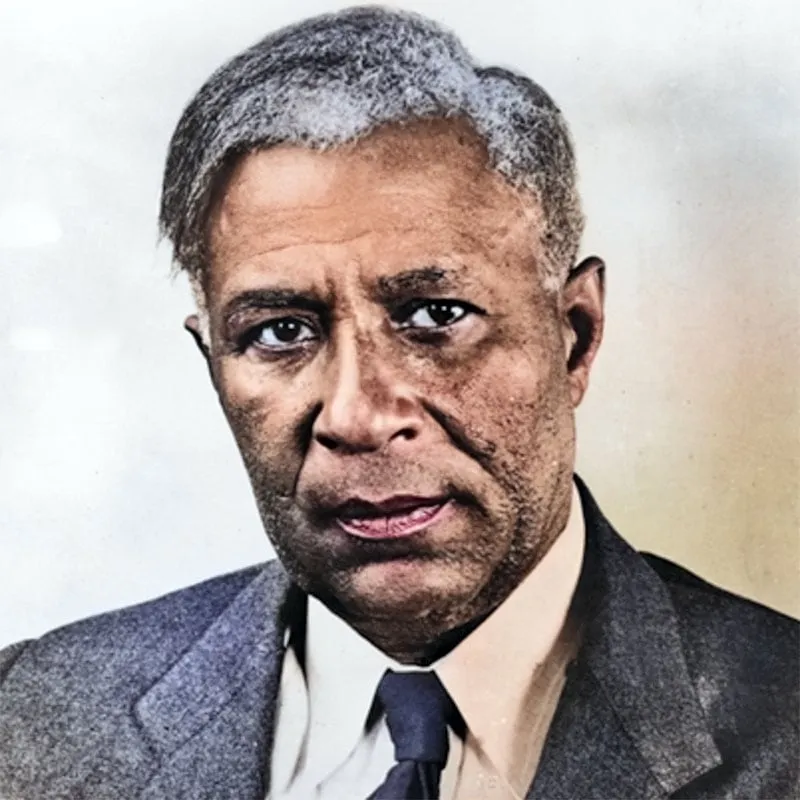
Jan Matzeliger
Sometimes the greatest inventions are those which simplify necessary tasks. Such is the case with Jan Matzeliger – the man who made it possible for ordinary citizens to purchase shoes.
Jan Matzeliger was born in Dutch Guiana (now known as Surinam) in South America. His father was a Dutch engineer and his mother was born in Dutch Guiana and was of African ancestry. His father had been sent to Surinam by the Dutch government to oversee the work going on in the South American country.
At an early age, Jan showed a remarkable ability to repair complex machinery and often did so when accompanying his father to a factory. When he turned 19, he decided to venture away from home to explore other parts of the world. For two years he worked aboard an East Indian merchant ship and was able to visit several countries. In 1873, Jan decided to stay in the United States for a while, landing in Pennsylvania. Although he spoke very little English, he was befriended by some Black residents who were active in a local church and took pity on him. Because he was good with his hands and mechanically inclined, he was able to get small jobs in order to earn a living.
Pioneer/Entrepreneur
At some point he began working for a cobbler and became interested in the making of shoes. At that time more than half of the shoes produced in the United States came from the small town of Lynn, Massachusetts. Still unable to speak more than rudimentary English, Matzeliger had a difficult time finding work in Lynn. After considerable time, he was able to begin working as a show apprentice in a shoe factory. He operated a McKay sole-sewing machine which was used to attached different parts of a shoe together. Unfortunately, no machines existed that could attach the upper part of a shoe to the sole. As such, attaching the upper part of a shoe to the sole had to be done by hand. The people who were able to sew the parts of the shoe together were called “hand lasters” and expert ones were able to produce about 50 pairs of shoes in a 10 hour work day. They were held in high esteem and were able to charge a high price for their services, especially after they banded together and formed a union called the Company of Shoemakers. Because the hand lasters were able to charge so much money, a pair of shoes was very expensive to purchase. Hand lasters were confident that they would continue to be able to demand high sums of money for their services saying “… no matter if the sewing machine is a wonderful machine. No man can build a machine that will last shoes and take away the job of the laster, unless he can make a machine that has fingers like a laster – and that is impossible.” Jan Matzeliger decided they were wrong.
After working all day Matzeliger took classes at night to learn English. Soon, he was able to read well enough to study books on physics and mechanical science. This enabled him to a number of inventions. Lacking sufficient money, he was unable to patent these inventions and watched helplessly as other people claimed to have created the devises and received the financial rewards they brought. Matzeliger did not despair over these situations because he was already thinking of a more important invention – the shoe laster.
Watching hand lasters all day, Matzeliger began understanding how they were able to join the upper parts of a shoe to the sole. At night he sat devising methods for imitating the mannerisms of the hand lasters and sketched out rough drawings of a machine that might work in the same manner.
Although he attempted to keep his invention a secret, people found out, including the expert hand lasters he was trying to “compete” with. These people criticized and ridiculed him and tried to dissuade him pursuing his goal. He considered on, however, and decided to try to raise money in order to improve his working model. He was offered $50.00 to sell the device he had created up to that point but turned it down, knowing that if people were interested in buying, he was on the right track.
Percy Julian
A pioneer in the chemical synthesis of medicinal drugs from plants, including a synthetic form of cortisone
Charles Drew
A pioneer in the field of blood transfusions who developed improved techniques for blood storage.
Elijah McCoy
Invented lubrication systems for steam engines. His devices were referred to as “The Real McCoy.”

As he improved the device, other offers of money came in, some as high as $1,500.00. Matzeliger could not bear to part with the device he had put so much work into creating so he held out until he reached a deal to sell a 66% interest in the devices to two investors, retaining the other third interest for himself. With the new influx of cash, Jan finished his second and third models of the machine. At this point he applied for a patent for the device.
Because no one could believe that anyone could create a machine which could duplicate the work of expert lasters, the patent office dispatched a representative to Lynn, Massachusetts to see the device in action. In March 1883, the United States Patent Office issued a patent to Jan Matzeliger for his “Lasting Machine.” Within two years, Matzeliger had perfected the machine to that point that it could produce up to 700 pairs of shoes each day (as compared to 50 per day for a hand laster.)
Sadly, Matzeliger would only enjoy his success for a short time, as he was afflicted with tuberculosis in 1886 and died on August 24, 1889 at the age of 37. As a result of his work, shoe manufacturing capabilities increased as did efficiency. This allowed for lower prices for consumers and more jobs for workers. Matzeliger left behind a legacy of tackling what was thought to be an impossible task – making shoes affordable for the masses.
Videos About Jan Matzeliger


From Dreams Comes Success
Walker remembered that the formula for her hair grower came to her in a dream: “God answered my prayer, for one night I had a dream, and in that dream a big Black man appeared to me and told me what to mix up for my hair. Some of the remedy was grown in Africa, but I sent for it, mixed it, put it on my scalp, and in a few weeks my hair was coming in faster than it had ever fallen out. I tried it on my friends; it helped them. I made up my mind I would begin to sell it.”

Jan Matzeliger Items

Same-Day & Walk-In Apts
Covid 19 Testing
Easy Booking & Renewals
Expert Doctors
Trusted by 20k+ Patients
On Demand 24/7 Telehealth
Other Notable Inventors
Percy Julian
A pioneer in the chemical synthesis of medicinal drugs from plants, including a synthetic form of cortisone







